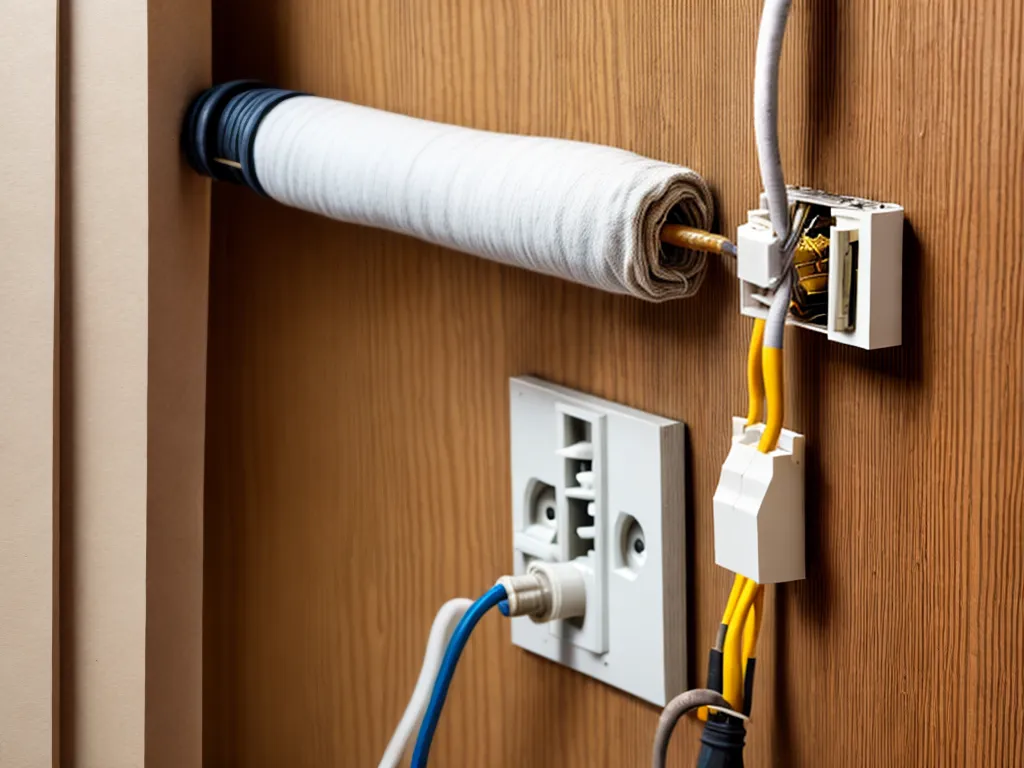
What is Knob and Tube Wiring?
Knob and tube wiring was commonly installed in homes built before 1930. It features:
- Single solid copper wires encased in cloth or rubber insulation.
- Wires supported along their length by ceramic knobs.
- Wires passing through porcelain tubes at joists and studs.
This old wiring system is outdated and potentially hazardous compared to modern electrical wiring. It lacks a ground wire and the insulation degrades over time, increasing fire risk.
Why Insulate Knob and Tube Wiring?
There are several important reasons to insulate knob and tube wiring:
-
Prevent arcs or sparks - Degraded insulation can allow wires to arc or spark, creating a fire hazard.
-
Improve safety - Properly insulating wires reduces shock risk. Uninsulated knob and tube poses a serious hazard, especially in attics and crawl spaces.
-
Increase efficiency - Insulated wires better hold heat. This improves energy efficiency as less heat is lost through walls.
-
Reduce noise - Insulated wires dampen electromagnetic noise that can occur with uninsulated knob and tube wiring.
Options for Insulating Knob and Tube Wiring
There are a few approaches to insulating knob and tube wiring:
Leave Existing Wires In Place and Insulate Around Them
This involves leaving the knob and tube wiring intact but installing insulation around it.
-
Pros - Less invasive and preserves existing wiring.
-
Cons - Does not eliminate fire and shock risks inherent to aged, ungrounded wiring.
Insert Insulated Sleeves Over Exposed Wires
Plastic or foil sleeves can be fitted over exposed wires.
-
Pros - Quick and easy to install. Improves safety of existing wiring.
-
Cons - Leaves most wire still exposed. Limited improvement to efficiency. Does not address lack of grounding.
Fully Re-Wire Home with Modern Wiring
Replacing knob and tube with new wiring offers full safety and efficiency.
-
Pros - Removes all risks of old wiring. Allows installing extra circuits.
-
Cons - Very labor intensive. High cost of rewiring entire home.
How to Install Insulation Around Knob and Tube Wiring
If leaving knob and tube wiring in place, it must be done carefully to avoid damage and fire risks.
Step 1: Inspect Wiring
Closely inspect all knob and tube wiring that will be insulated over. Look for:
- Brittle, cracked, or damaged insulation
- Areas where insulation has peeled away from conductors
- Signs of overheating like discolored wires
Any damaged or dangerous sections should be decommissioned or spliced with new wiring.
Step 2: Install Fire Blocking
Fire blocking involves installing mineral wool or fiberglass insulation to seal any holes where wiring penetrates walls, floors, and ceilings. This helps stop potential fires from spreading.
Step 3: Do Not Cover Ceiling Lights or Outlets
Leave a space of at least 1 inch around any knob and tube ceiling lights or outlets. Do not bury them behind insulation.
Step 4: Use Correct Insulation Materials
Select insulation rated for direct contact with wiring. Common options include mineral wool, spray foam, or thermal batt insulation. Avoid cellulose insulation - it can degrade knob and tube wiring.
Step 5: Leave Air Space Around Wires
Build boxes around wiring leaving at least 1/2 inch of air space around each wire. This prevents insulation from pressing against aged wiring.
Step 6: Label all Knob and Tube Locations
Clearly label where knob and tube wiring runs behind walls and ceilings. This prevents unsafe disturbance in future work.
Proper installation technique is crucial when insulating over knob and tube wiring. Consult with an electrician throughout the process to ensure safety. Attempting insulation without correcting hazards could have disastrous results.
Recommendation: Re-Wire for Maximum Safety and Efficiency
While insulation improves safety compared to exposed knob and tube, the best solution is fully rewiring your home.
The most prudent recommendation is to remove any aging, hazardous knob and tube and install modern wiring with proper insulation and grounding.
Though rewiring requires greater upfront investment, the long-term benefits of electrical safety, easier upgrades, and energy efficiency make it worthwhile.
I strongly advise homeowners to consider rewiring instead of just insulating over knob and tube. Your family's safety is invaluable. Contact a qualified electrician to discuss rewiring your home with the latest wiring standards.